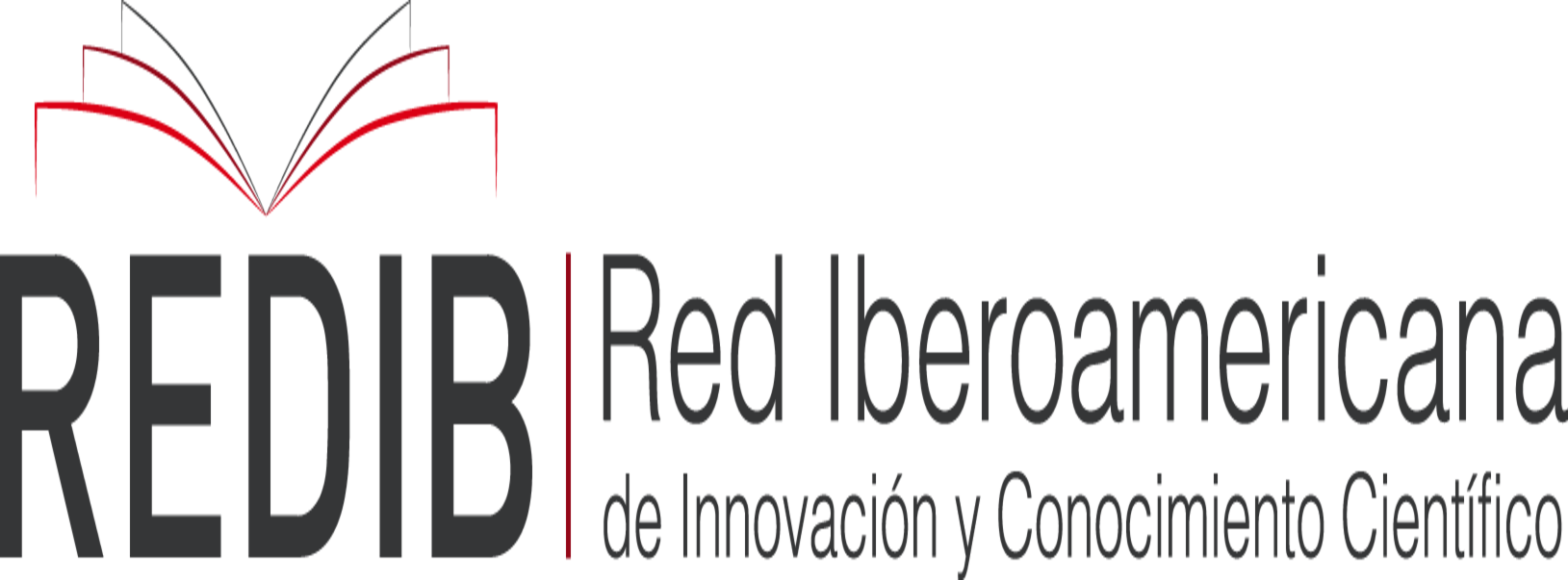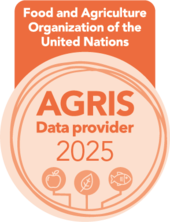Aproximación a la epidemiología de la varroosis en apiarios de Chile Central
DOI:
https://doi.org/10.57188/manglar.2023.043Resumen
La varroosis es una enfermedad de las abejas causada por el ácaro Varroa destructor, cuya epidemiología está asociada a varios factores. Su control depende de aspectos ambientales o genéticos, pero también del manejo sanitario apícola. Para identificar algunos de sus aspectos epidemiológicos se estudiaron 58 apiarios ubicados en tres regiones de Chile Central. Los apiarios fueron monitoreados cinco veces en diferentes épocas. Se incorporaron factores relacionados con las prácticas de manejo por parte de los apicultores mediante una encuesta cualitativa. Se midieron las tasas de infestación por Varroa sp. y la fortaleza de la colmena en cada caso. Los resultados indicaron que las tasas de infestación por Varroa sp. son variables en relación a las prácticas de manejo, especialmente, respecto de la alimentación suplementaria (suplementos energéticos y proteicos), y respecto a las opciones de tratamiento varroicida. A pesar de los esfuerzos de los apicultores por tratar sus colonias, la prevalencia global de varroosis fue cercana al 53%. Esto indica que, para controlar eficazmente esta parasitosis se deben incluir metodologías adicionales y estandarizadas, desde un punto de vista holístico, que incluyan selección, mejoramiento genético, biotécnicas para el control de los ácaros y, en casos específicos, tratamientos territoriales coordinados.
Descargas
Referencias
Bernardi, S., & Venturino, E. (2016). Viral epidemiology of the adult Apis mellifera infested by the Varroa destructor mite. Heliyon, 2, e00101. https://doi.org/10.1016/j.heliyon.2016.e00101
Castilhos, D., Polesso, A. M., da Silva, A. C. F., et al. (2023). Varroa destructor infestation levels in Africanized honey bee colonies in Brazil from 1977 when first detected to 2020. Apidologie, 54, 5. https://doi.org/10.1007/s13592-022-00984-9
Dainat, B., Dietemann, V., Imdorf, A., & Charrière, J. D. (2020). A scientific note on the ´Liebefeld method´ to estimate honey bee colony strength: its history, use, and translation. Apidologie, 51, 422-427. https://doi.org/10.1007/s13592-019-00728-2
Danka, R. G., Harris, J. W., Villa, J. D., & Dodds, G. E. (2013). Varying congruence of hygienic responses to Varroa destructor and freeze-killed brood among different types of honeybees. Apidologie, 44, 447-457. https://doi.org/10.1007/s13592-013-0195-8
DeGrandi-Hoffman, G., Ahumada, F., Zazueta, V., Chambers, M., Hidalgo, G., & de Jong, E. W. (2016). Population growth of Varroa destructor (Acari: Varroidae) in honey bee colonies is affected by the number of foragers with mites. Experimental and Applied Acarology, 69, 21-34. https://doi.org/10.1007/s10493-016-0022-9
DeGrandi-Hoffman, G., Ahumada, F., & Graham, H. (2017). Are dispersal mechanisms changing the host–parasite relationship and increasing the virulence of Varroa destructor (Mesostigmata: Varroidae) in managed honey bee (Hymenoptera: Apidae) colonies? Environmental Entomology, 46(4), 737-746. https://doi.org/10.1093/ee/nvx077
DeGrandi-Hoffman, G., Corby-Harris, V., Chen, Y., Graham, H., Chambers, M., de Jong, E.W., Ziolkowoski, N., Kang, Y., Gage, S., Deeter, M., Simone-Finstrom, M., & de Guzmán, L. (2020). Can supplementary pollen feeding reduce varroa mite and virus levels and improve honey bee colony survival? Experimental and Applied Acarology, 82, 455-473. https://doi.org/10.1007/s10493-020-00562-7
Delaplane, K. S., van der Steen, J., & Guzman-Novoa, E. (2013). Standard methods for estimating strength parameters of Apis mellifera colonies. Journal of Apicultural Research, 52(1), 1-12. https://doi.org/10.3896/IBRA.1.52.1.03
Dietemann, V., Nazzi, F., Martin, S. J., Anderson, D. L., Locke, B., Delaplane, K. S., Wauquiez, Q., Tannahill, C., Frey, E., Ziegelmann, B., Rosenkranz, P., & Ellis, J. D. (2013). Standard methods for varroa research. Journal of Apicultural Research, 52(1), 1-54. https://doi.org/10.3896/IBRA.1.52.1.09
Fisher, A. II, Coleman, C., Hoffmann, C., Fritz, B., & Rangel, J. (2017). The synergistic effects of almond protection fungicides on honey bee (Hymenoptera: Apidae) forager survival. Journal of Economic Entomology, 110(3), 1-7. https://doi.org/10.1093/jee/tox031
Gabel, M., Scheiner, R.., & Buechler, R. (2023). Immediate and long-term effects of induced brood interruptions on the reproductive success of Varroa destructor. Apidology, 54, 20. https://doi.org/10.1007/s13592-023-00998-x
Giacobino, A., Bulacio Cagnolo, N., Merke, J., Orellano, E., Bertozzi, E., Masciangelo, G., Pietronave, H., Salto, C., & Signorini, M. (2014). Risk factors associated with the presence of Varroa destructor in honey bee colonies from east-central Argentina. Preventive Veterinary Medicine, 115, 280-287. https://doi.org/10.1016/j.prevetmed.2014.04.002
Giacobino, A., Molineri, A., Bulacio Cagnolo, N., Merke, J., Orellano, E., Bertozzi, E., Masciangelo, G., Pietronave, H., Pacini, A., Salto, C., & Signorini, M. (2016). Key management practices to prevent high infestation levels of Varroa destructor in honey bee colonies at the beginning of the honey yield season. Preventive Veterinary Medicine, 131, 95-102. https://doi.org/10.1016/j.prevetmed.2016.07.013
Giacobino, A., Pacini, A., Molineri, A., Rodríguez, G., Crisanti, P., Bulacio Cagnolo, N., Merke, J., Orellano, E., Bertozzi, E., Pietronave, H., & Signorini, M. (2018). Potential associations between the mite Varroa destructor and other stressors in honeybee colonies (Apis mellifera L.) in temperate and subtropical climate from Argentina. Preventive Veterinary Medicine, 59, 143-152. https://doi.org/10.1016/j.prevetmed.2018.09.011
Giorgini, M., Taroncher, M., Tolosa, J., Ruiz, M. J., & Rodríguez-Carrasco, Y. (2023). Amitraz and its metabolites: Oxidative stress-mediated cytotoxicity in HepG2 cells and study of their stability and characterization in honey. Antioxidants, 12, 885. https://doi.org/10.3390/antiox12040885
Grant, K. J., DeVetter, L., & Melathopoulos, A. (2021). Honey bee (Apis mellifera) colony strength and its effects on pollination and yield in highbush blueberries (Vaccinium corymbosum). PeerJ, 9, e11634. http://doi.org/10.7717/peerj.11634
Gregorc A., Alburaki, M., Sampson, B., Knight, P. R., & Adamczyk, J. (2018). Toxicity of selected acaricides to honey bees (Apis mellifera) and varroa (Varroa destructor Anderson and Trueman) and their use in controlling varroa within honey bee colonies. Insects, 9(2), 55. https://doi.org/10.3390/insects9020055
Gregorc, A., Dominguez, C., Tutun, H., & Sevin, S. (2022). What has been done in the fight against Varroa destructor: from the past to the present. Ankara Universitesi Veteriner Fakultesi Dergisi, 69, 229-240. https://doi.org/10.33988/auvfd.1029296
Guzmán-Novoa, E., Morfin, N., De la Mora, A., Macías-Macías, J. O., Tapia-González, J. M., Contreras-Escareño, F., Medina-Flores, C. A., Correa-Benítez, A., & Quezada-Euán, J. J. G. (2020). The process and outcome of the africanization of honey bees in Mexico: Lessons and future directions. Frontiers in Ecology and Evolution, 8, 608091. https://doi.org/10.3389/fevo.2020.608091
Higes, M., Martín-Hernández, R., Hernández-Rodríguez, C. S., & González-Cabrera, J. (2020). Assessing the resistance to acaricides in Varroa destructor from several Spanish locations. Parasitology Research, 119, 3595-3601. https://doi.org/10.1007/s00436-020-06879-x
Jack, C. J., & Ellis, J. D. (2021). Integrated pest management control of Varroa destructor (Acari: Varroidae), the most damaging pest of (Apis mellifera L. (Hymenoptera: Apidae)) colonies. Journal of Insect Science, 21(5), 6, 1-32. https://doi.org/10.1093/jisesa/ieab058
Johnson, R. M., Dahlgren, L., Siegfried, B. D., & Ellis, M. D. (2013). Acaricide, fungicide and drug interactions in honey bees (Apis mellifera). PLoS ONE, 8(1), e54092. https://doi.org/10.1371/journal.pone.0054092
Kirrane, M. J., de Guzmán, L. I., Whelan, P. M., Frake, A. M., & Rinderer, T. E. (2018). Evaluations of the removal of Varroa destructor in Russian honey bee colonies that display different levels of Varroa sensitive hygienic activities. Journal of Insect Behavior, 31, 283-297. https://doi.org/10.1007/s10905-018-9672-2
Lamas, Z. S., Solmaz, S., Ryabov, E. V., Mowery, J., Heerman, M., Sonenshine, D., Evans, J. D., Hawthorne, & D. J. (2023). Promiscuous feeding on multiple adult honey bee hosts amplifies the vectorial capacity of Varroa desrtuctor. PLoS Pathogens, 19(1), e1011061. https://doi.org/10.1371/journal.ppat.1011061
Li, Z., Yang, H., Yu, L., Liu, C., & Wu, X. (2022). The negative effect of flumethrin stress on honey bee (Apis mellifera) worker from larvae to adults. Pesticide Biochemistry and Physiology, 188, 105289. https://doi.org/10.1016/j.pestbp.2022.105289
Locke, B. (2016). Inheritance of reduced Varroa mite reproductive success in reciprocal crosses of mite-resistant and mite-susceptible honey bees (Apis mellifera). Apidologie, 47, 583-588. https://doi.org/10.1007/s13592-015-0403-9
Masaquiza, D., Vargas, J., Ortíz, N., Salazar, R., Curbelo, L., Pérez, A., & Arenal, A. (2021). Hygienic behavior of Apis mellifera and its relationship with Varroa destructor infestation and honey production in the Central Highlands of Ecuador. Insects, 12(11), 966. https://doi.org/10.3390/insects12110966
Meixner, M. D., Kryger, P., & Costa, C. (2015). Effects of genotype, environment, and their interactions on honey bee health in Europe. Current Opinion in Insect Science, 10, 177-184. https://doi.org/10.1016/j.cois.2015.05.010
Mortensen, A. N., Jochym, M., Dearden, P. K., & Sainsbury, J. P. (2023). Old strategies as modern solutions, shook swarming reduced Varroa destructor infestation rates of managed honey bee, Apis mellifera, colonies. Journal of Apicultural Research, https://doi-org.utalca.idm.oclc.org/10.1080/00218839.2023.2243044
ODEPA. 2018. Apicultura chilena: actualización de mercado y estadísticas sectoriales. https://www.odepa.gob.cl/wp-content/uploads/2018/10/articulo-miel_octubre-1.pdf
ODEPA. 2020. Catastro frutícola. Región Metropolitana. Principales resultados. https://bibliotecadigital.odepa.gob.cl/bitstream/handle/20.500.12650/70429/catastroFruticolaStgo2020.pdf
Olate-Olave, V.R., Verde, M., Vallejos, L., Perez Raymonda, L., Cortese, M.C., & Doorn, M. 2021. Bee health and productivity in Apis mellifera, a consequence of multiple factors. Veterinary Sciences, 8, 76. https://doi.org/10.3390%2Fvetsci8050076
Panziera, D., van Langevelde, F., & Blacquière, T. (2017). Varroa sensitive hygiene contributes to naturally selected varroa resistance in honey bees. Journal of Apicultural Research 56(5), 635-642. https://doi.org/10.1080/00218839.2017.1351860
Pinto, F. A., Teixeira, E. W., Guimaraes-Cestaro, L., Martins, M. F., Alves, M. L. T. M., & Message, D. (2022). Varroa destructor in Africanized honey bees in Brazil: genetic and reproductive profile. Sociobiology, 69(1), e7340. https://doi.org/10.13102/sociobiology.v69i1.7340
Qi, S. Z., Niu, X. Y., Wang, D. H., Wang, C., Zhu, L. Z, Xue, X. F., Zhang, Z. G., & Wu, L. (2020). Flumethrin at sublethal concentrations induces stresses in adult honey bee (Apis mellifera L.). Science of the Total Environment, 700, 134500. https://doi.org/10.1016/j.scitotenv.2019.134500
Ramsey, S., Ochoa, R., Bauchan, G., Gulbronson, C., Mowery, J., Cohen, A., Lim, D., Joklik, J., Cicero, J. M., Ellis, J., Hawthorne, D., & vanEngelsdorp, D. (2019). Varroa destructor feeds primarily on honey bee fat body tissue and not hemolymph. Proceeding of the National Academy of Sciences, 116(5), 1792-1801. https://doi.org/10.1073/pnas.1818371116
Rashid, B., Khani, A., Ghasemi, V., Ghadamyari, M., Sahebzadeh, N., & Moharramipour, S. (2020). Evaluation of a new plant-based formulation for the treatment of varroosis in the honey bee colonies: efficacy and safety. Apidologie, 51, 1074-1090. https://doi.org/10.1007/s13592-020-00786-x
SAG, Servicio Agrícola y Ganadero. (2020). Available online in: htpps://www.sag.cl (Consulted on 25th August 2023).
Sanabria, J. L., Demedio, J., Pérez, T., Peñate, I., Rodríguez, D., & Lóriga, W. (2015). Índices de infestación por Varroa destructor en colmenas sin medidas de control. Revista de Salud Animal, 37(2), 118-124.
Sperandio, G., Simonetto, A., Carnesecchi, E., Costa, C., Hatjina, F., Tosi, S., & Gilioli, G. (2019). Beekeeping and honey bee colony health: A review and conceptualization of beekeeping management practices implemented in Europe. Science of the Total Environment, 696, 133795. https://doi.org/10.1016/j.scitotenv.2019.133795
Steinhauer, N., Kulhanek, K., Antúnez, K., Human, H., Chantawannakul, P., Chauzat, M. P., & vanEngelsdorp, D. (2018). Drivers of colony losses. Current Opinion in Insect Science, 26, 142–148. https://doi.org/10.1016/j.cois.2018.02.004
Steinmann, N., Corona, M., Neumann, P., & Dainat, B. (2015). Overwintering is associated with reduced expression of immune genes and higher susceptibility to virus infection in honey bees. PLoS ONE 10(6), e0129956. https://doi.org/10.1371/journal.pone.0129956
Tosi, S., Nieh, J. C., Sgolastra, F., Cabbri, R., & Medrzycki, P. (2017). Neonicotinoid pesticides and nutritional stress synergistically reduce survival in honey bees. Proceedings of the Royal Society B, 284, 20171711. https://doi.org/10.1098/rspb.2017.1711
Trade Map. ITC. Estadísticas del comercio para el desarrollo internacional de las empresas. Lista de productos exportados por Chile. Available online in: www.trademap.org (Consulted on 25th August 2023).
Van Engelsdorp, D., Lengerich, E., Spleen, A., Dainat, B., Cresswell, J., Baylis, K., Neguyen, B. K., Soroker, V., Underwood, R., Human, H., Le Conte, Y., & Saegerman, C. (2013). Standard epidemiological methods to understand and improve Apis mellifera health. Journal of Apicultural Research, 52(4), 1-16. https://doi.org/10.3896/IBRA.1.52.4.15
Verde, M., Gómez, T., & Demedio, J. (2012). Salud Apícola. Tomo I. Generalidades. Editorial Consejo Científico Veterinario de Cuba. La Habana, Cuba. 1ª Ed. ISBN: 978-959-7190-15-8.
Verde, M., Demedio, J., & Gómez, T. (2013). Apicultura. Salud y Producción. Tomo II. Guía Técnica para el Apicultor. Editorial Consejo Científico Veterinario de Cuba: La Habana, Cuba. 1ª Ed. ISBN: 978-959-7190-21-9.
Wegener, J., Ruhnke, H., Scheller, K., Mispagel, S., Knollmann, U., Kamp, G., & Bienefeld, K. (2016). Pathogenesis of varroosis at the level of the honey bee (Apis mellifera) colony. Journal of Insect Physiology, 91-92, 1–9. https://doi.org/10.1016/j.jinsphys.2016.06.004
Woodford, L., Sharpe, G., Highet, F., & Evans, D. J. (2023). All together now: Geographically coordinated miticide treatment benefits honey bee health. Journal of Applied Ecology, 60, 790-802. https://doi.org/10.1111/1365-2664.14367
Zhu, Y. C., Adamcyzk, J., Rinderer, T., Yao, J., Danka, R., Luttrell, R., & Gore, J. (2015). Spray toxicity and risk potential of 42 commonly used formulations of row crop pesticides to adult honey bees (Hymenoptera: Apidae). Journal of Economic Entomology, 108(6), 2640–2647. https://doi.org/10.1093/jee/tov269
Publicado
Número
Sección
Licencia
Derechos de autor 2023 Mayda Verde Jiménez, Leslie Vallejos, Jorge Demedio, Marnix Doorn, Verónica R. Olate-Olave

Esta obra está bajo una licencia internacional Creative Commons Atribución 4.0.

Manglar is an open access journal distributed under the terms and conditions of Creative Commons Attribution 4.0 International license









